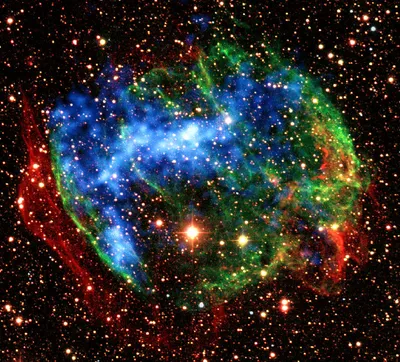For as long as human beings have looked up at the night sky, a question has echoed in our hearts: are we alone? The stars seem endless, the galaxies uncountable, and yet the silence from the cosmos remains profound. To bridge that silence, generations of scientists have turned their instruments outward, straining to detect even the faintest whisper of another intelligence. This endeavor—the Search for Extraterrestrial Intelligence, or SETI—is one of the most audacious projects in human history. It is not only about astronomy or engineering; it is about belonging, about our place in the universe, and about the possibility of neighbors among the stars.
The Origins of SETI
The modern search for extraterrestrial signals began in earnest in 1960 with Project Ozma. Using a modest radio telescope in West Virginia, astronomer Frank Drake pointed his antenna toward two nearby sun-like stars, hoping to detect artificial radio transmissions. The attempt was brief and ultimately unsuccessful, but it was historic—it marked the beginning of humanity’s scientific quest to listen for voices beyond Earth.
From those early days, the logic behind SETI was both simple and profound. If Earth’s civilization can generate powerful radio signals—everything from television broadcasts to radar—then perhaps other civilizations, scattered across the galaxy, might also use radio waves. Since radio travels at the speed of light and can cross interstellar distances, it was the perfect medium for a message that could outlive its senders.
Breakthrough Listen: A Modern Effort
In January 2016, the quest took a monumental leap forward with the launch of Breakthrough Listen. Funded by philanthropist Yuri Milner and supported by leading scientists, it became the most ambitious SETI program ever undertaken. Unlike earlier efforts that relied on limited observing time, Breakthrough Listen dedicated powerful telescopes—including the Green Bank Telescope in West Virginia, the Parkes Observatory in Australia, and the Automated Planet Finder in California—to a systematic search of the skies.
For the first time, SETI had the resources to scan millions of stars and even entire galaxies, sweeping across vast ranges of the electromagnetic spectrum. And unlike traditional projects that kept results closely held, Breakthrough Listen emphasized transparency: the data is made public, inviting researchers everywhere to participate in humanity’s shared search.
A New Way of Thinking: Galaxies as Beacons
One of the more fascinating developments from Breakthrough Listen is the idea of looking not just at individual stars, but at entire galaxies. A recent paper by theoretical astronomer Brian C. Lacki explores this bold approach. Instead of searching for single, distinct transmissions, Lacki asked: what if a galaxy contained multiple civilizations, all broadcasting in radio? What if the combined glow of their signals made the galaxy appear unusually “radio bright”?
It is an elegant twist on the SETI strategy. Rather than seeking the needle in the cosmic haystack—a lone signal directed at Earth—this approach looks at the haystack itself. If advanced societies are common, their collective broadcasts could leave detectable imprints on the radio emissions of galaxies.
Natural Noise Versus Artificial Whispers
The challenge, of course, is that galaxies already shine in radio waves. Supermassive black holes, star-forming regions, and charged particles swirling through magnetic fields all contribute to natural radio emissions. These phenomena can be spectacular: active galactic nuclei, powered by matter falling into black holes, can outshine entire galaxies.
So how could we ever distinguish an artificial glow from a natural one? Lacki’s answer is subtle. By studying the statistical distribution of radio-bright galaxies, astronomers can set upper limits on how many could plausibly host civilization-driven emissions. If we know how bright galaxies “should” be, then any significant excess could hint at something more. Even if we cannot prove it is artificial, we can constrain the possibilities—and rule out the presence of countless hypothetical galaxy-spanning societies.
The Kardashev Scale and Galactic Civilizations
To place this in perspective, scientists often use the Kardashev scale, proposed by Russian astronomer Nikolai Kardashev in 1964. This framework classifies civilizations by their energy use: a Type I harnesses the energy of a planet, a Type II commands the energy of a star, and a Type III wields the power of an entire galaxy.
Lacki’s findings suggest that Kardashev Type III civilizations—societies broadcasting on a galactic scale—are exceedingly rare. Fewer than one in 100,000 galaxies could plausibly host one. This does not mean intelligent life does not exist, but it implies that civilizations capable of tapping into the full energy of a galaxy, and broadcasting that energy in radio, are vanishingly uncommon. Perhaps civilizations plateau before reaching such extremes, or perhaps their technologies evolve away from radio altogether.
The Fermi Paradox and Von Neumann Probes
This leads us to the haunting question known as the Fermi Paradox: if intelligent life is common, why don’t we see evidence of it? The galaxy is billions of years old—ample time for civilizations to spread, even using slow spacecraft. One theoretical solution involves self-replicating probes, sometimes called Von Neumann probes, that could multiply and explore the galaxy at exponential rates. If such probes were possible, then advanced civilizations should have colonized much of the galaxy by now. Yet we find no sign of them.
Lacki’s work engages with this paradox by examining the possibility of large-scale technosignatures. If swarms of civilizations were transmitting, or if their probes were building networks across galaxies, we might detect their collective presence. The fact that we do not suggests limits, either on the number of civilizations or on the technologies they employ.
The Emotional Weight of Silence
There is something profoundly moving about this silence. Each new paper, each survey, carries both scientific rigor and human yearning. We want to know we are not alone, that intelligence is not a rare flicker in a cold, indifferent universe. Yet the silence does not mean despair. It also sharpens our sense of wonder: if we are unique, then our responsibility to preserve life and consciousness becomes even greater. If others are out there, the search itself is the bridge we are building toward them.
SETI is not only about finding others—it is about defining ourselves. By asking if other minds exist, we confront our own nature. What does it mean to be intelligent? To build civilizations? To communicate across light-years? These questions stretch science into philosophy, and data into meaning.
The Expanding Frontier of Technosignatures
Radio waves are only the beginning. Modern SETI researchers are broadening the search to include technosignatures in other parts of the spectrum. Just as Dyson Spheres—hypothetical megastructures capturing the energy of stars—might glow with excess infrared radiation, advanced societies could reveal themselves through X-rays, gamma rays, or even exotic particles we have not yet imagined.
In this light, Lacki’s work is a step toward a more holistic approach. By considering populations of civilizations rather than isolated signals, SETI moves closer to understanding the universe at scale. Perhaps one day, surveys will not just ask if a single star harbors intelligence, but whether intelligence itself is woven into the fabric of galaxies.
Humanity’s Place in the Cosmic Choir
The search for extraterrestrial intelligence is, ultimately, a search for connection. It is an attempt to place humanity within the great cosmic story. Whether the universe is filled with voices or whether we are alone, the search itself is transformative. It forces us to think in scales of millions of years, billions of stars, and the profound fragility of our own civilization.
Brian Lacki’s work, and projects like Breakthrough Listen, are more than scientific milestones—they are acts of hope. They are humanity pressing its ear against the vastness of space, listening for an answer. Perhaps one day, a signal will come, clear and undeniable. Or perhaps the silence will continue, teaching us that we must be the caretakers of the rare gift we represent.
Until then, we listen. And in the listening, we discover not only the universe, but ourselves.
More information: Brian C. Lacki, Artificial Broadcasts as Galactic Populations: III. Constraints on Radio Broadcasts from the Cosmic Population of Inhabited Galaxies, arXiv (2025). DOI: 10.48550/arxiv.2508.00249






